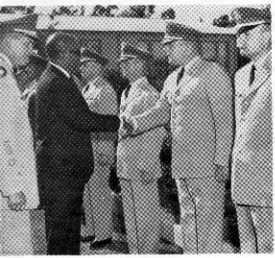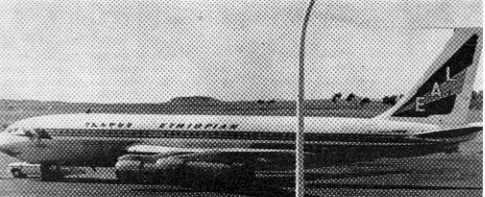Ethiopia is in the process of developing a
modern system of roads. Currently within the
province of Eritrea, there is about 385 miles
of bituminized road and 100 miles of
macadamized road. There is also 1,400 miles
of secondary roads.
Ethiopia Air Lines operates modern jet service
from Germany and Greece to international
terminals at Asmara and Addis Ababa.
Internally, EAL provides DC3, Convair and
DC6B service to various parts of the country.
Ethiopian railroads are operated by the
government. There is no rail transport
between Eritrea and southern Ethiopia. In the
northern province, 306 kilometers of track
connect Massawa on the Red Sea, with
Asamara on the central highland, and Cheren
and Agordat to the northwest. Passenger
service is offered, and provides one of the
most thrilling rail rides in the world on the
Massawa to Asmara trip.

Ethiopian has established diplomatic relations
and maintains friendly relations with many
importand world powers. There are more
than 50 diplomatic missions resident in Addis
Ababa. As part of its effort to progress
rapidly Ehtiopia welcomes economic and
technical assistance from both the West and
East, as well as from "uncommitted" nations
and from various UN specialized agencies.
With regard to Est-West issues, Ethiopia
follows a neutralist policy and tends to favor
neither the one side nor the other in UN
forums and elsewhere.
Ethiopia has warmly welcomed the emergence
of new independent nations in Africa, and
increasingly identifies itself as an active
member of the African Bloc in the UN. It has
participated in all important Pan-African
conferences. It was host to the Second
Conference of Independent Aftrican States
His Highness Asrate Kassa, Governor General of Eritrea, pays a formal visit to Kagnew Station, being introduced to members of the command's staff
